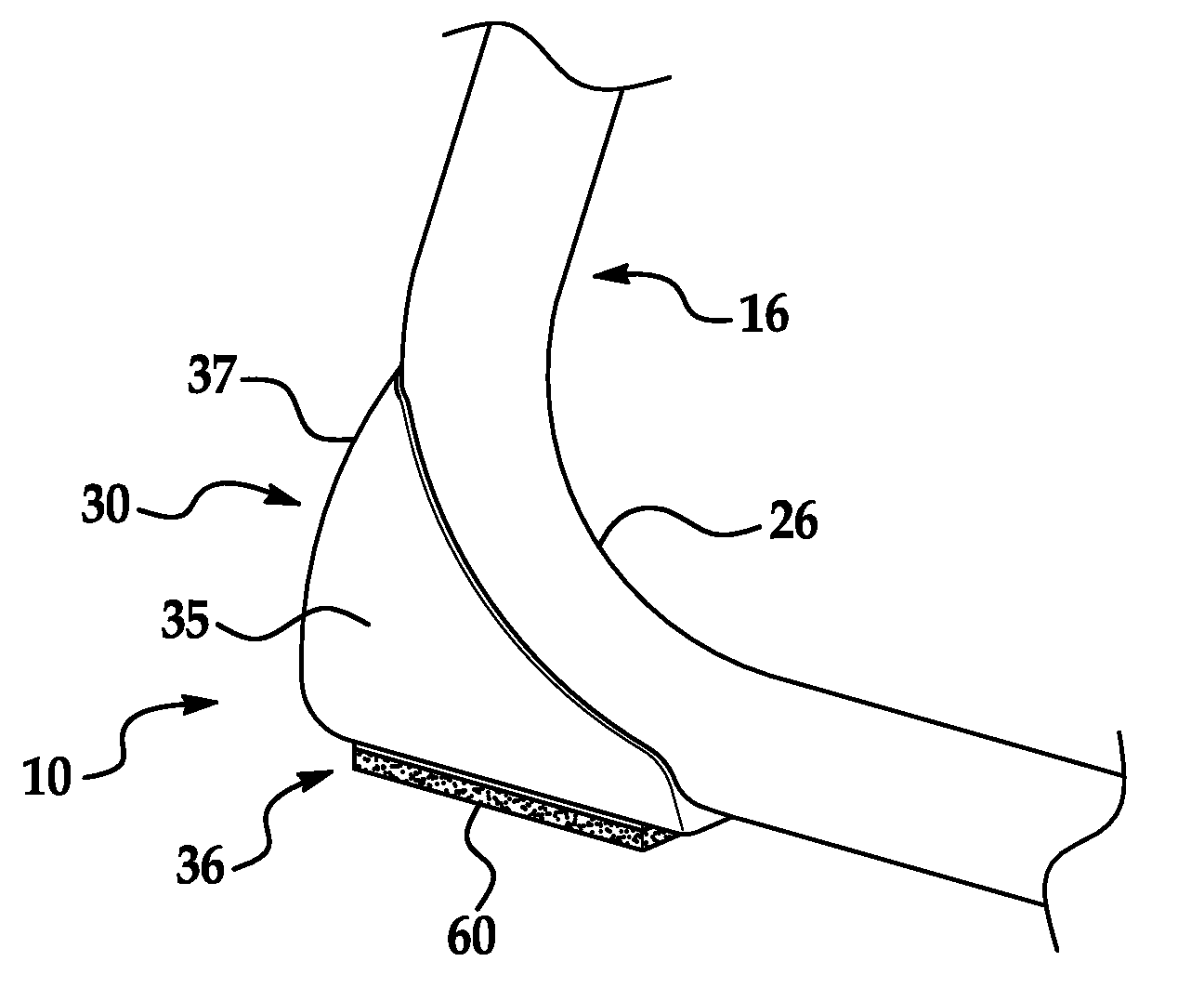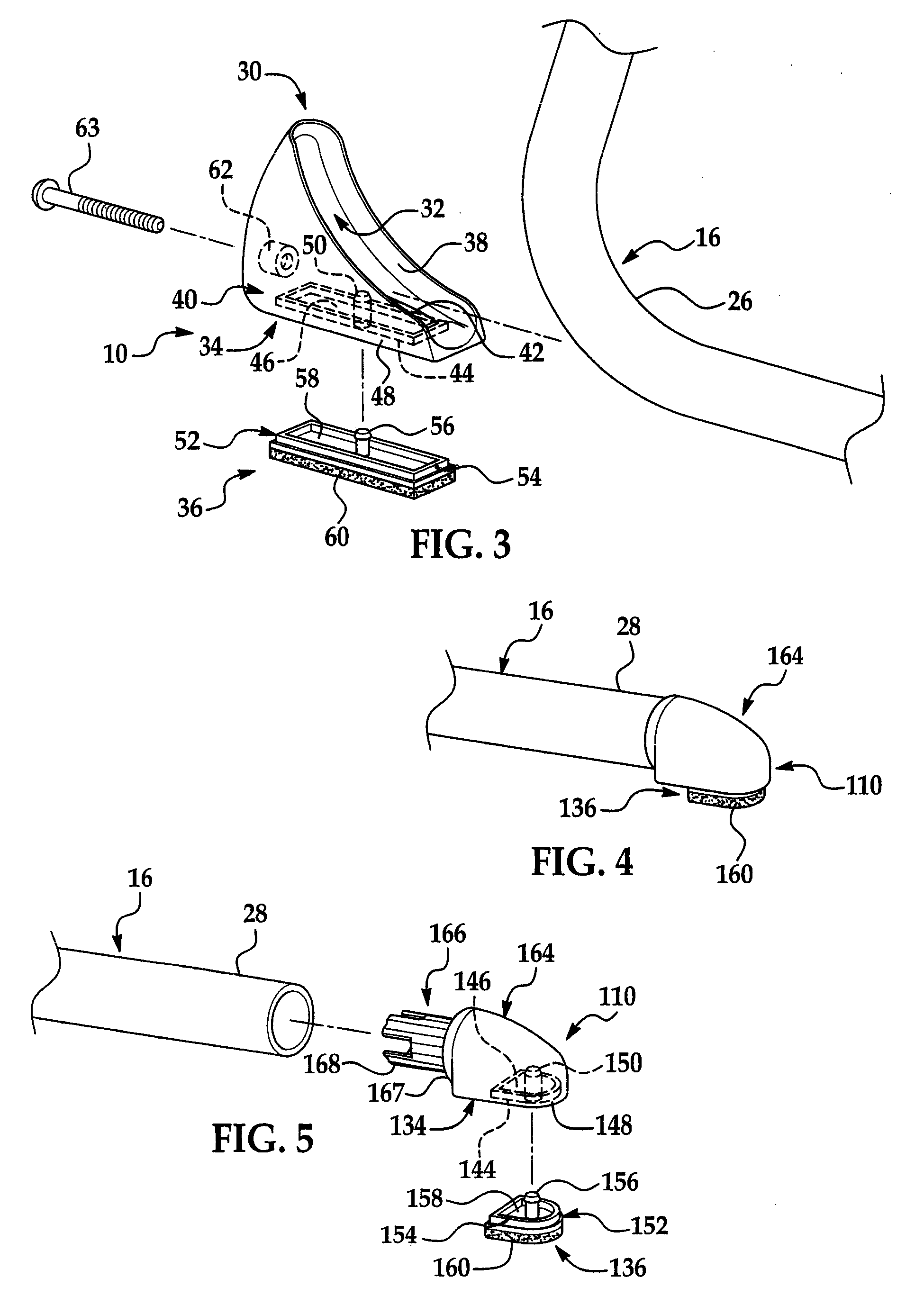Furniture-foot assemblies
a technology for furniture and parts, applied in the field of furniture feet, can solve the problems of increasing the incidence and coverage of floor scraping, scratching or marring, and generating noise, so as to reduce the incidence of floor and reduce the noise of scraping, scratching or marring
- Summary
- Abstract
- Description
- Claims
- Application Information
AI Technical Summary
Benefits of technology
Problems solved by technology
Method used
Image
Examples
Embodiment Construction
[0021]Referring now to the figures, where like numerals are used to designate like structure, first and second furniture-foot assemblies of the present invention are generally indicated respectively at 10, 110. Whereas the foot assembly 10 is adapted to be removably attached to the elbow of a sled-type leg of a piece of furniture (such as a chair), generally indicated at 12, that is adapted to be supported upon a surface of, say, a floor 14, the foot assembly 110 is adapted to be removably attached to the free end of the sled-type leg.
[0022]As shown in FIG. 1, a sled-type leg, generally indicated at 16, includes, in general, a cross-member 17 attached to and extending across a bottom surface 20 of a seat, generally indicated at 22, of the chair 12. The leg 16 also includes opposed, identical uppermost portions 18 integrally extending vertically from respective ends of the cross-member 17 toward the floor surface 14. The leg 16 also includes a pair of opposed, identical lowermost por...
PUM
 Login to View More
Login to View More Abstract
Description
Claims
Application Information
 Login to View More
Login to View More - R&D
- Intellectual Property
- Life Sciences
- Materials
- Tech Scout
- Unparalleled Data Quality
- Higher Quality Content
- 60% Fewer Hallucinations
Browse by: Latest US Patents, China's latest patents, Technical Efficacy Thesaurus, Application Domain, Technology Topic, Popular Technical Reports.
© 2025 PatSnap. All rights reserved.Legal|Privacy policy|Modern Slavery Act Transparency Statement|Sitemap|About US| Contact US: help@patsnap.com



